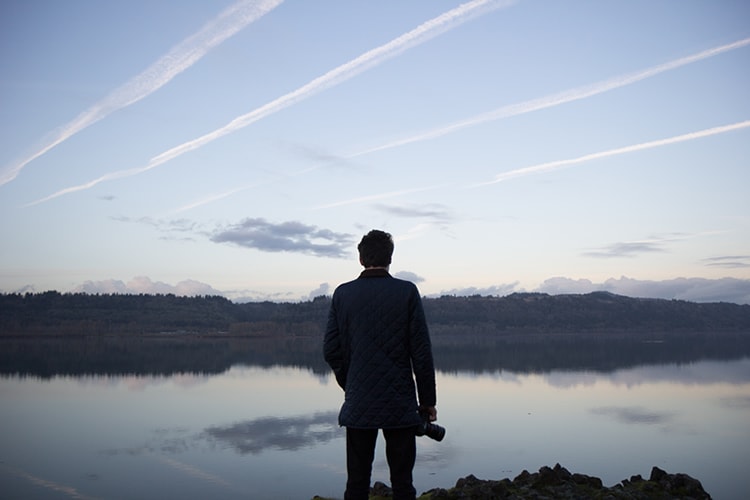9 Helpful Tips That Will Improve The Background In Your Photos
It’s unfortunate, but backgrounds are an often-forgotten part of photography. It’s easy to focus on other aspects of the photo, like the main subject or focal point, and forget to pay attention to what’s happening in the background.
Backgrounds deserve better! The background can either make or break an image, and is one of the easiest ways to transform a lackluster composition into an exceptional photograph. The background can help set the stage, add context to portraits, or lead the viewer through a photo. On the other hand, a busy or distracting background can overwhelm an image, ruining an otherwise good composition.

If you’re looking for a simple way to step up your photography and enhance your photos, the humble background can help you take your photography to a new level.
Tips for Using Backgrounds Effectively
The first step to improving backgrounds is by simply being aware. Looking for ways to use the background to enhance your photo’s composition can help you to choose the best backgrounds for your images.
When used effectively, the background can have a big impact on the resulting photo. Here are a few ways that you can change the look of your photos simply by adjusting the background.
-
Keep It Simple
Often, the composition will call for a simple and clutter-free background. Some photographers find it helpful to carry large, colored sheets of card with them, to put behind their subjects when they’re on a photoshoot. Another option is looking out for simplified backgrounds – like the side of a building or wall, or angling the shot so that the sky or ground is the backdrop.
This will provide a simplified background, and help to ensure that nothing distracts from the subject.
-
Blur the Background
Blurring the background is another way to create a simplified background. By using a wide aperture, something like f/2.8 or f/5.6, you’ll be able to blur the background and draw the subject into focus. For the best blur, be sure to place your subject a slight distance away from the fence, wall, or whatever is behind them serving as your backdrop. You can also use a lens with a long focal length to separate the subject from the background, blurring it out.
-
Get Some Bokeh
Bokeh – beautiful out-of-focus points of light, make an especially nice backdrop for portraits, or close-up and macro imagery. To capture bokeh, use a prime lens or any lens with a wide aperture, and photograph facing the light source. The Golden Hour is an especially good time for capturing bokeh, due to the angle of the light.
-
Fill the Frame With Your Subject
If you don’t have a good background for your image, try getting closer! Filling the entire frame with the subject is one of the most effective ways to remove all distractions. This is especially effective when working in a setting with a busy background.
-
Try Different Angles
If your background isn’t working, try a different angle. Get low, get high, or even consider having your subject move. You’ll be surprised at how different a background can look from a slightly adjusted angle. Simply moving a few steps can completely change the background, often for the better.
-
Look for Contrasting Colors
A contrasting background can help to draw the focus onto your subject. Avoid colors that clash and conflict, and tones that don’t compliment your subject. Look for contrasting colors that will help to separate your subject from the background, drawing them into focus and adding visual interest to your images.
-
Turn the Background Black
Speaking of contrast, did you know that you could use a bright flash and narrow aperture to turn the background black? If your subject is close enough, you can use this technique to create a dark backdrop, isolating the subject from the background.
-
Consider Panning
Here’s a technique that works if you’re photographing a moving subject. Panning involves using a slow shutter speed – like 1/30 or slower, and tracking the moving subject through the viewfinder. Hold the shutter halfway down, then with the subject in focus, release the shutter. The resulting image will be an in-focus subject and a background with motion blur, giving the sense of motion and movement.
-
Incorporate the Background
Finally, look out for ways to use background details as part of the overall composition. In the right context, a background that contains detail can provide an inside glimpse into the context of the photo, helping to set the stage. To incorporate the background into your image, find your focal point, and then choose a focal length or angle that makes this the main point of interest in the image.
Keep the other elements in the background, and use them to help tell your story.
Watch Out for Distractions
While it may sound basic – often, we’re so focused on the subject that we forget to check for unwanted distractions behind them. Things such as lampposts, trees, and branches can serve as unwanted elements that can ruin an otherwise great photo. And of course, watch out for horizon lines running directly behind the subject’s head, or competing focal points that could serve as a distraction. Before snapping the shot, take a second to make sure the frame is free from any unwanted elements.
Whether you blur it out or include it as part of your composition, paying attention to the background is one of the best ways to instantly improve your photography, helping you to capture images that have a polished and professional look.
How do you use backgrounds to enhance your photos? Share your tips with us via Twitter or Facebook!
